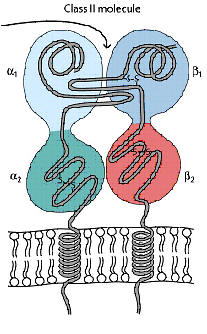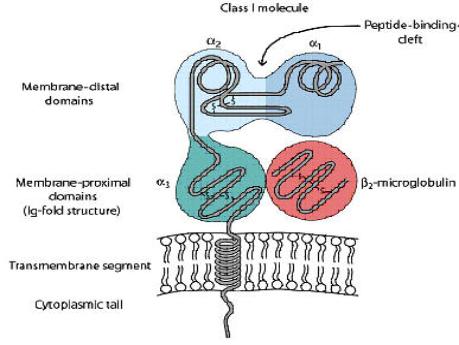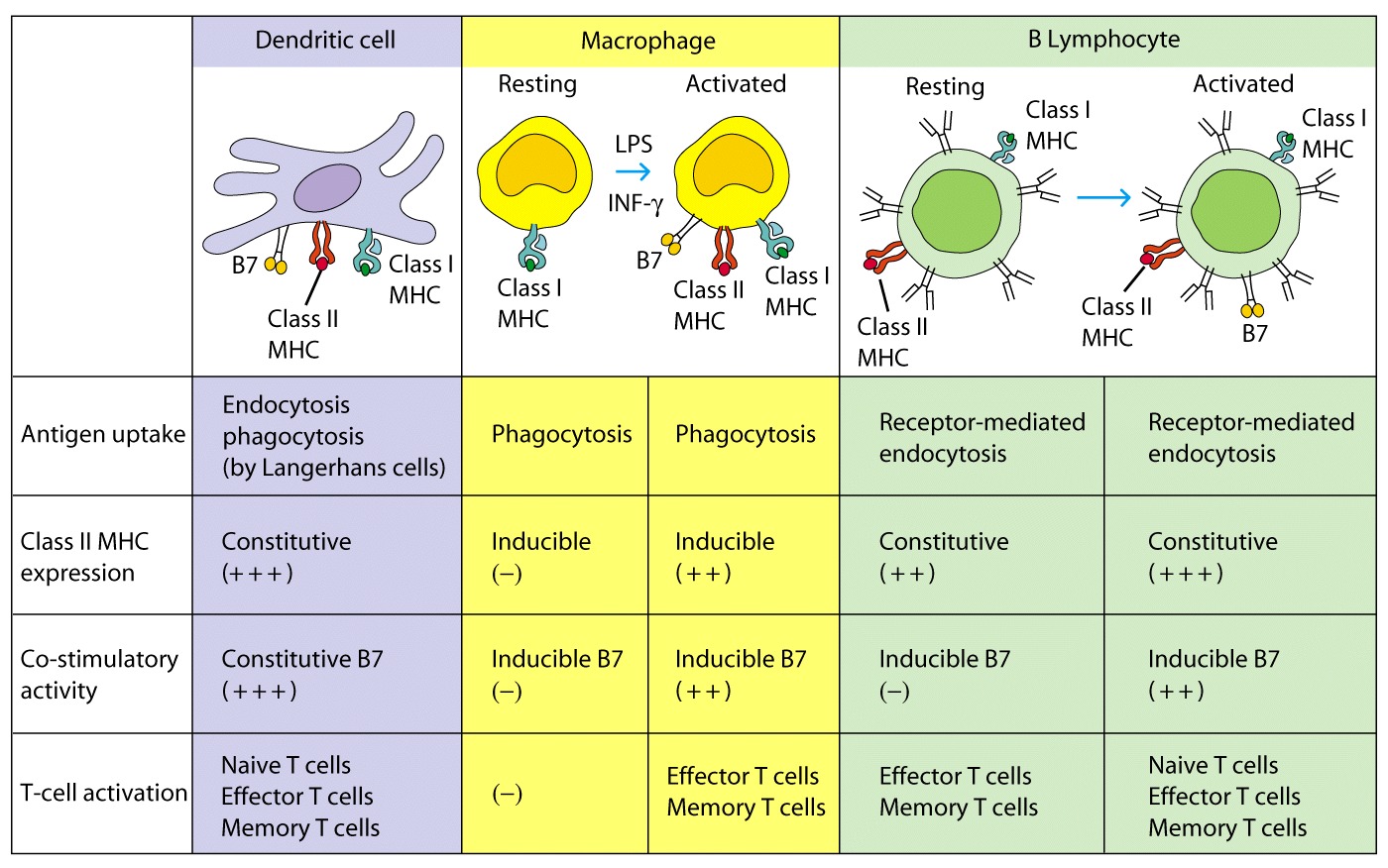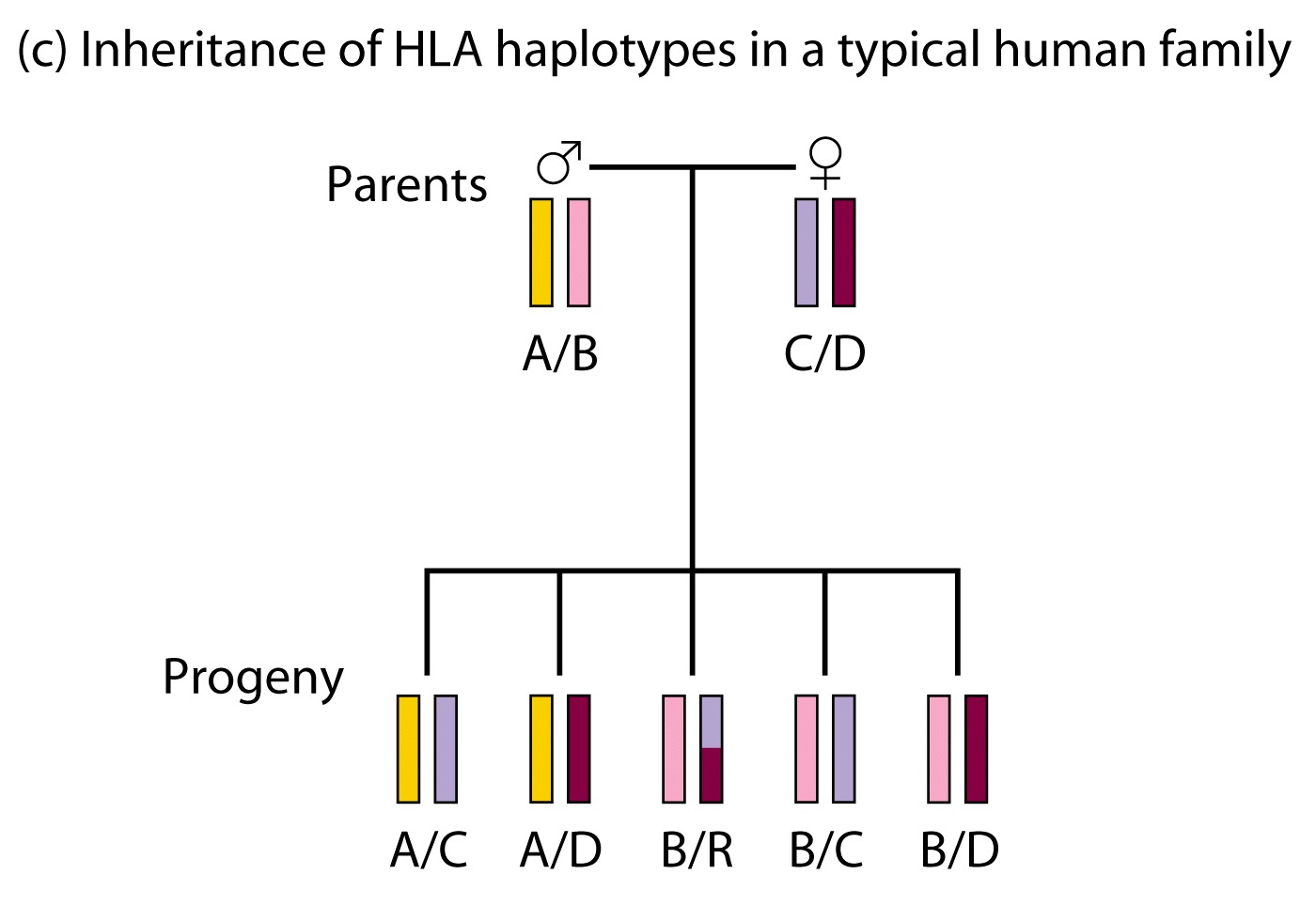MHC General Characteristics
- Large
complex of linked genes with related function
MHC in Humans
- Expression of Class I and II
- Presentation to TH and Tc
- Disease Association
- There are 50,000 - 100,000 MHC molecules on a typical cell
- Most 'normal' MHC molecules are occupied by self peptides
Structure of Class II
- Made
up of a heterodimer (α and β chains)
- Present to TH cells
- Highly polymorphic genes (huge # of alleles)


Class II MHC molecules
contain two different polypeptide chains
33 kDa α
and 28 kDa β
They are membrane
bound glycoproteins that contain external domains, and transmembrabe domain and
a cytoplasmic domain
External domains
consist of α 1 and 2 as well as β 1 and 2
This cleft is
large enough to bind a peptide of 13-18 amino acids
Structure of Class I

- Class
I molecules consist of a 45 kDa α chain associated with a 12 kDa β2
microglobulin molecule
- Present to Tc cells
- The α chain is a transmembrane glycoprotein encoded
by the genes within the A, B and C regions (Humans)
- β2 microglobulin is encoded on a different
chromosome and is required for expression of the MHC class I molecule on
cell membranes
- α chain has 3 domains 1,2 and 3
- α 1 and 2 domains form the peptide binding cleft
- This cleft is large enough to bind a peptide of 8-10
amino acids
- Tumor Cells: in an attempt to evade death they have
stopped expressing β2 M, therefore are unable to express MHC class I
and will not be able to be presented to Tc cells.
Both class I and II MHC
molecules can display a huge # of peptides
There is no specificity as to what is displayed, rather what fits
in the cleft
Expression
of Class I MHC
Since the MHC alleles are codominantly
expressed, a heterozygous individual expresses on its cells the gene products
encoded by both alleles at each MHC locus
Ex
From parents you would inherit B1 C1 A1 -
Mother
B2 C2 A2 - Father 
Mouse
H-2
- The
expression of so many Class I molecules allows each cell to display a large
number of peptides in the peptide binding cleft of its MHC molecule
- Most
variation exists within the peptide binding region
Expression of Class II MHC
- Because
each of the class II MHC molecules is composed of two different polypeptide
chains, which are encoded by different loci, a heterozygous individual
expresses not only the parental class II molecules but also molecules
containing the α and β chains.
Ex

What are possible combinations for the Class
II molecule?
DPα1β1
DPα1β2
DPα2β1
DPα2β2
So there is a huge number of
receptors possible!
Thus there is a enough
heterogeneity in class I and II to account for the almost infinite # of Ag

MHC expression
- Type I all nucleated cells
- Type II B, M0, dendritic cells,
thymus epithelial



Haplotype
- a
set of alleles of linked genes present on one parental chromosome
- a
set of genes that determine different antigens but are closely enough linked
to be inherited as a unit
- the
observed patterns (various combinations) of alleles for the genes in a
particular gene
Disease Association
- The
diseases associated with particular MHC alleles include autoimmune disorders
-
The
association between the HLA alleles and a specific disease may be determined
by looking at the frequency of the HLA alleles expressed in a particular
person afflicted with the disease.
-
Compare
to the frequency of this allele in the general population.
-
Relative
risk can then be calculated.
| Receptor |
HLA
|
# of
|
|
| or (subunit) |
Locus |
Alleles
|
|
| |
---------Class I |
------------
|
|
|
|
|
|
|
A |
A
|
349
|
|
|
B
|
B
|
627
|
|
|
C
|
C
|
182
|
|
|
E
|
5
|
|
|
F
|
2
|
|
|
G
|
15
|
|
|
|
|
|
| |
Class II
|
|
|
|
DP
|
|
|
|
|
(α )
|
DPA1
|
22
|
|
|
( β)
|
DPB1
|
116
|
|
|
|
|
|
|
DQ
|
|
|
|
|
(α )
|
DQA1
|
28
|
|
|
( β)
|
DQB1
|
61
|
|
|
|
|
|
|
DR
|
|
|
|
|
(α )
|
DRA
|
3
|
|
|
( β1)
|
DRB1
|
394
|
|
|
( β3)
|
DRB3
|
41
|
|
|
( β4)
|
DRB4
|
13
|
|
|
( β5)
|
DRB5
|
18
|
|
|
|
|
|
| |
DOA
|
8
|
|
| |
DOB
|
9 |
|
| |
DMA
|
4 |
|
| |
DMB |
7 |
|
|









